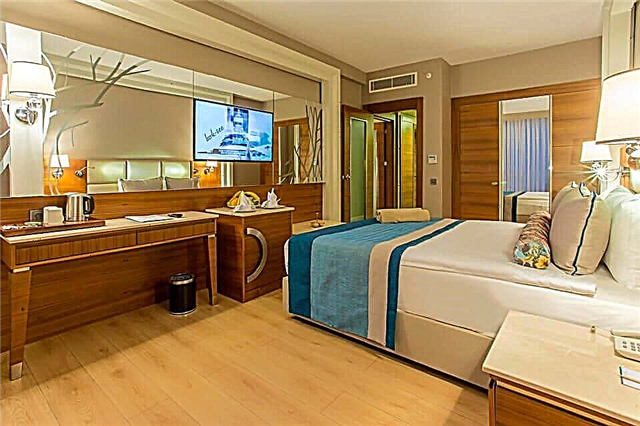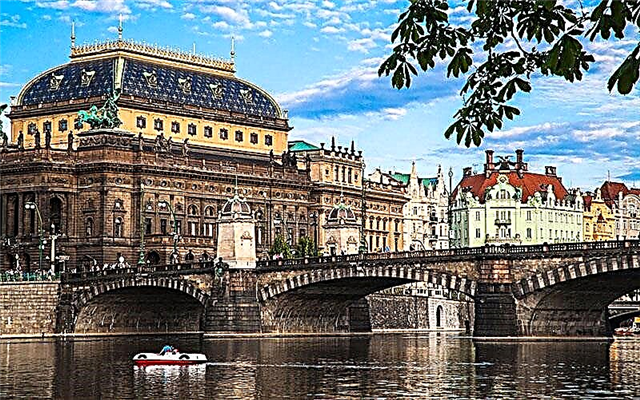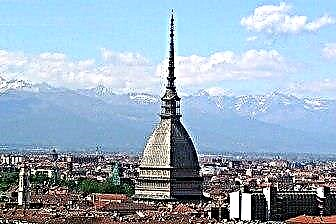If someone thinks that in Germany the city of museums is only Dresden, then they are mistaken. On the right bank of the Rhine, at the confluence of the river. Dussel, Dusseldorf is located - the focus of various museums. The richest long history of the ancient city in all its manifestations is reflected in their exhibitions. They represent all types of ancient and modern art, capture the memory of the great classics. Like Dresden, the city literally rose from the ashes of war and became more beautiful than before. Dusseldorf's museums are the main attraction for many tourists.
Goethe Museum
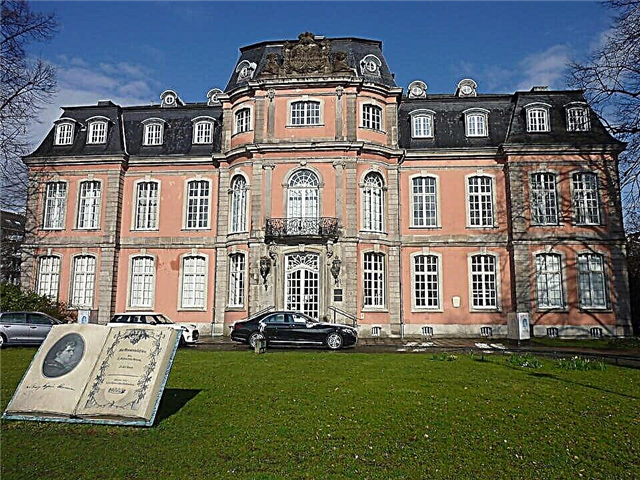
Only in such an unusually beautiful palace like the Jägerhof was the Goethe Museum supposed to be located. The greatest classic of world poetry did not live in Dusseldorf, but the city considered it an honor to open a museum named after him in 1956. Already only one phrase from "Faust" "only he is worthy of life and freedom, who every day goes to fight for them" - immortalized his name. For this purpose, one of the most beautiful buildings was chosen - the Jägerhof Palace. Built in the 18th century. in the baroque style with rococo elements, the magnificent building belonged to Karl Theodore. Napoleon was the guest of honor in it during the years of his greatness.
All 11 rooms represent the era of the genius Goethe. The exposition is based on a private collection of the Kippenberg spouses who are in love with Goethe's poetry. In the central Faustian hall, his famous tragedy is presented from various angles of art. Scientific philosophical and theological works, literary criticism, works of painting and music, theatrical performances, feature films and documentaries - the spectrum of the embodiment of Goethe's poetic masterpiece is very widespread.
Kunstpalast Museum

Located near Altstadt. Many priceless works of various types of art of the past centuries are concentrated in its halls. A unique collection of works by Renaissance masters (from the collections of the Art Gallery of Dusseldorf) has found its place here. Among them are not only outstanding subject and landscape canvases, but also graphic works (15-20 centuries).
More than 3 thousand glass items - artistic masterpieces of the 17-19th century - were transferred here from the glass museum. Here you can admire the sculptures of famous sculptors of the past and present. The Kunstpalast regularly hosts thematic exhibitions: photography, design, multimedia, etc.
Some of the exhibits are displayed right on the lawns. A few meters away is the NRW Forum, which exhibits various avant-garde artworks. Kunstpalast is a universal institution for acquaintance with art of all genres. The extensive library contains a huge number of newspapers, magazines, art history literature.
Museum K20

A large-scale construction of the avant-garde type that appeared on Grabbeplatz in 1986. The reason for its creation was the acquisition by the city of 88 paintings by P. Klee (1961). Experiencing a shortage of exhibition space, the city authorities built a new building with an eye to the future. The collection began to grow rapidly with sculptures, installations and photographs (1990). The Shtendehause exhibits "joined" the K20, significantly enriching the funds of the new establishment with unique exhibits.
The entire palette of classical art of the 20th century is presented in the halls. The period from 1900 to 1945 includes works by modernists, fauves, surrealists, cubists, expressionists, and others. Even rare works by artists from the Blue Horseman group are presented. The era of 1945-80s is reflected in the eccentric creations of Pollock, Rauschenberg, Warhol, Boyes, Kirkeby and others. After the recent restoration of the K20 exposition, unusual works by Zailstorfer, Miro, Ernst, Pollock were added. Some of them surprise, and sometimes shock, but do not leave you indifferent.
Museum K21

Anyone who first sees a rather pompous building next to a small pond is immediately fascinated by it. The most extravagant K 21 is located here. Earlier, the Parliament of Westphalia sat in this luxurious building - Stendhaus. After 14 years of oblivion, the empty premises were restored and in 2002 a museum of art of the late 20th and 21st centuries was opened. The transparent glass roof, which creates an airy space, is the best fit for the purpose.
Here are collected works of famous artists, photographers, sculptors, installers - Pike, Broodtars, Gursky, Ruff, Schütte and many other creators of our time. The audience of different ages is attracted here by extraordinary exhibits, intriguing with their originality. The installations "Dance of Shadows", "In Orbit", "Gray Men" and much more are impressive.
Interesting classes await schoolchildren here who are taking their first steps in the field of contemporary art. For example, they turn a roll of yellow sticky tape into a huge "piece of cheese", from the holes of which "mice" faces protrude.
Heinrich Heine Museum

In Dusseldorf, where the romantic poet Heine was born and lived, a museum named after him could not but appear. It was inaugurated in 1970 in the house where the author of lyrical masterpieces that inspired great composers was born and raised. This place in Altstadt is the most beautiful and interesting. The materials of the city library served as the basis of the literary exposition.
Original manuscripts, a collection of autographs, many photographs are presented. The organizers of the museum carefully collected the poet's personal belongings. Among the exhibits is the musical archive of Schumann, who created many pieces of music based on Heine's poems. A literary center was organized. It regularly hosts literary and poetry evenings, accompanied by reading the works of German writers.
Dusseldorf City Museum

Düsseldorf's oldest museum, opened in 1874 in the Spee palace, continues to attract the attention of visitors. The palace is located in a picturesque place in the Old Town, on the shores of Lake Speesgraben, surrounded by lush tree crowns. Remains of an ancient fortress wall and sections of a protective ditch have been preserved nearby. The expositions fully reveal the history of the city's development over the centuries, from the Bronze Age. There are unique archaeological finds found as a result of excavations.
Photos, archival documents, paintings demonstrate the change in the appearance of city streets and squares, the emergence of new monuments and structures. A separate exposition is devoted to the post-war reconstruction of the city. The collection of portraits of local residents introduces famous public figures and creative personalities of Dusseldorf. Selected exhibitions are dedicated to art, architecture, music and fashion. Sculptures, graphics, art canvases are presented in a wide variety.
Etienne Ceramics Museum

The merit in the creation belongs to Laurence Etienne, who is fond of collecting ceramic products since the beginning of the 20th century. It was opened in 1909, based on a wonderful collection of Etienne porcelain items. Now the number of exhibits surpasses all such establishments.
Porcelain items of various eras are displayed here - from ancient times to the present day. You can endlessly admire the Meissen and Delft porcelain sets - real artistic masterpieces. Etienne's personal collection reflects the history of ceramics and porcelain over 8 thousand years. The range of ceramic and porcelain items is unusually wide. Cult jewelry, all sorts of trinkets, figurines, sculptures, vases, figurines of animals, birds, porcelain dishes are presented in thematic expositions.
There are products made by the Inca, Aztec and Mayan tribes, Hindus, Arabs. Among them are truly priceless specimens.For example, a huge ceramic dome brought from Pakistan (2nd century AD). The area of the hall where it is located is 2 thousand square meters.The geography of objects is also diverse: Ancient Greece, Rome, Italy, China, England, Asia, etc.
Neanderthal museum

Visiting this museum, located in the Ice Age Reserve Park, you can really feel the atmosphere of the Neanderthal period. Opened at the end of the 20th century. in the place of discovery of the remains of an ancient man (19th century). The unique find was called Neanderthal. The spiral building displays typical exhibits from that era. Stone tools, tools for hunting, food preparation, skeletons of fossil animals, wax figures of Neanderthals and much more, which arouses great public interest.
Hiking along the paths of the reserve is no less interesting and exciting. A dense virgin forest, rare species of trees, shrubs, birds and animals delight tourists. Here you will be lucky to see even a bison or tarpan. But not only the spectacularity of the expositions attracts visitors here. There is a special workshop where those who wish can learn how to make Stone Age tools. Here master classes are held for schoolchildren who are passionate about archeology. They learn to explore fossils, analyze and draw conclusions.
Löbecke Aqua Zoo and Museum

An amazing corner of a beautiful landscape with ponds, waterfalls, a Japanese garden - the abode of a variety of amphibians and sea creatures. Such a picturesque aqua zoo and the Löbeke Museum are ideal for people of all ages. Comfortable paths and benches are laid in the cozy park. The Oceanarium, opened after a recent renovation, presents the entire spectrum of marine life. Moray eels, sharks, rays, exotic fish, corals flicker in the transparent depths. The delight of children is the feeding of the stingrays.
A fascinating sight is the observation of amphibians: crocodiles, monitor lizards, outlandish lizards. The park area is divided into climatic zones with exact reproduction of conditions. Walking, for example, in the tropics, you can really feel all the tropical "delights". In each room, in addition to aquariums, there are interactive play areas for children. Excellent conditions have been created for all visitors, including wheelchair users and people with disabilities. Löbeck Waterpark is the best place for entertaining and educational leisure for children and adults.
Film Museum

The mysterious endless world of filmmaking is embodied in the grandiose Cinema Museum Düsseldorf. The beautiful modern building houses 4 floors of thematic exhibitions showcasing various areas of the film industry.
On the 1st floor, the attributes of the cinema backstage, hidden from the ordinary viewer, are demonstrated. Luxurious outfits of heroes of popular films, photographs of working moments of filming, posters, film awards, awards of famous artists of the past. Here you can get acquainted with interesting facts from the life of Marlene Dietrich, Marika Röck and other movie stars.
Expositions on the 2nd floor introduce you to the development of the world film industry from its inception to the present day. The first moving pictures, magic lanterns, old special effects devices and modern computer technologies are presented in all their variety.
3rd floor - an impromptu shooting area with cameras and special equipment. Here entertaining figurines of the shadow theater of the 18-19th century are exhibited. On the 4th floor, you can get acquainted with the preparatory cycle of work before the start of filming. In the "Black Box" cinema, decorated in the style of the first cinematographs, silent films are shown to the accompaniment of an organ.
Shipping Museum
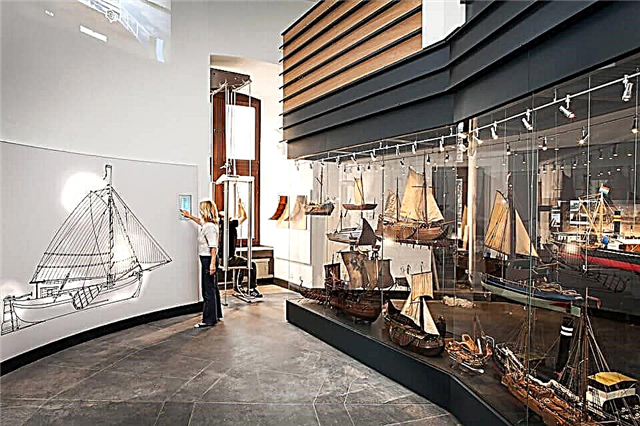
The picturesque 5-tiered tower houses the oldest museum of river navigation. The tower itself is the only surviving building of the former Düssel castle - a kind of rarity. It was added in the 16th century. and managed to survive, having survived repeated shocks that turned the castle into ruins. A brutal bombardment from the air in 1943 caused a fire, which significantly damaged the tower. When the decision was made in 1984 to open a shipping museum there, city residents and businessmen raised funds.
The tower was restored, all the exhibits available by that time, collected since 1930, were placed on its floors. Here are various instruments, elements of equipment for river vessels, a landscape model of the Rhine, a river port. There are interesting artifacts found on the river bottom. The entire history of shipping from antiquity to the present is reflected in the expositions of the institution.
Museum complex Hombroich Island

Unusual in style and purpose, the object, spread out on a small island of the river. Erft, near Düsseldorf, founded KG Müller at the turn of the 20th century. Previously, a NATO missile unit was based here. Instead of rocket launchers, 12 high-tech buildings were built here with Mueller's personal funds. These are exhibition pavilions in which works of African, Arab masters, abstract artists of the 20th century are demonstrated.
Pleasing to the eye, cheerful landscapes with flower lawns, bushes, streams enliven the overall picture. Müller, with his idea of the complex, sought to combine nature, art and modern high-tech style. Animal sculptures are installed here and there in the green areas. Especially impressive is the huge "rhino", peacefully "grazing" in the meadow. Tourists like to be here, where the seemingly incongruous is combined.
Museum complex Ehrenhof

It is not surprising that in Düsseldorf, which is unofficially considered the epicenter of German art, there is a complex dedicated to him. The solid buildings of the complex were erected in the 20s of the last century to house a large collection of works of art from the Renaissance and Baroque eras. They were in the 18th century. collected by the family of Elector Wellem. The grand opening of the Ehrenhof complex took place in 1926, and a little later, Dusseldorf was declared the center of European art.
In the first year, Ehrenhof was visited by 7.5 million people. The complex includes 2 museums, the Palace of Arts, and a concert hall. The collection includes famous canvases by famous artists of the 16-20 century. There are also magnificent works by members of the local Academy of Arts Cornelius and Shadov, young talented artists. The People and Economy Museum acquaints with the history of the successful development of the urban economy over the centuries. Today in Ehrenhof there are almost 100 thousand objects of art from different eras and cultures, from antiquity to the present.
Mustard Museum

Probably, every adult inhabitant of the planet has had to taste the taste of mustard more than once - one of the most common food spices. But few people know that Düsseldorf has a one-of-a-kind mustard museum. It is located in a specialized store, in a small room. The exhibits are tools for the production of mustard: apparatus, automatic machines, containers of various capacities. Raw materials are also presented - mustard seeds, vegetables, fruits, from which a "spicy" product is obtained.
Mustard of the famous Levenzenf brand is also displayed here. It is prepared according to a special recipe, adding different types of beer, hot chili peppers, and exotic fruits. The entire technological process of cooking can be seen in the video. Those who wish can try several varieties of flavoring seasonings. The store sells several dozen types of mustard packaged in glass jars. Here you can buy any of your choice to please your family and friends with the original seasoning.
Museum of European Horticulture

In the beautiful building of Benrath Castle (in the east wing), an amazing museum of European garden art was opened in April 2002. It's no secret that Europe, in particular, and Germany have long been famous for their ability to create incredibly beautiful gardens and parks. Their architectural and landscape design impresses with its harmonious beauty.
It is intended for visual acquaintance with the history of this direction from prehistoric eras to the present day. There are English and French style parks around the building. Even the most indifferent person will admire the amazing landscape paintings, magnificent sculptures, decorated in the Baroque style. There is a greenhouse, a vegetable garden where various crops are grown. Velvet green lawns, ideal paths, snow-white statues fascinate with beauty.
Inside (2 thousand sq. M.) There are works of art in the form of paintings, graphics, porcelain and ceramics. There is a lot of specialized literature on landscape and park art. There are rare books on the design of gardens and parks, various layouts. A visit to this wonderful corner of Dusseldorf is an aesthetic pleasure.
Theater Museum

Located in the Central Park, near the Rhine Opera. This is another example of using a private collection for the benefit of society. Theatrical life, full of exciting secrets, legends, dramas and intrigues, is presented in authentic exhibits. They were based on a collection of theatrical attributes collected over thirty years by one of the actresses - L. Dumont and director Gustav Lindemann.
In 1947, their substantial collection, registered as a private archive, was transferred to the ownership of the city. Only 30 years later, the municipality took an interest in these materials and organized an exhibition for the public. Seeing the interest in the artifacts aroused by the visitors, the authorities organized the Theater Museum. Getting acquainted with the documentary materials presented here, one can trace the evolution of the art of the Düsseldorf theater. Old photographs, playbills, posters, handwritten scenarios for productions, costume sketches illustrate the life of the theater of the 18-20th centuries.
The undoubted interest of visitors is attracted by E. Straube's photo archive (150 thousand photographs), which traces the formation of the city's opera art during the 19th and 21st centuries. The staff organize lectures on the history of the theater not only for adults, but also for children. Many people come here to meet their favorite actors and musicians. On the chamber stage, drama and puppet performances, sketches and reprises, dance shows are held almost every day.

